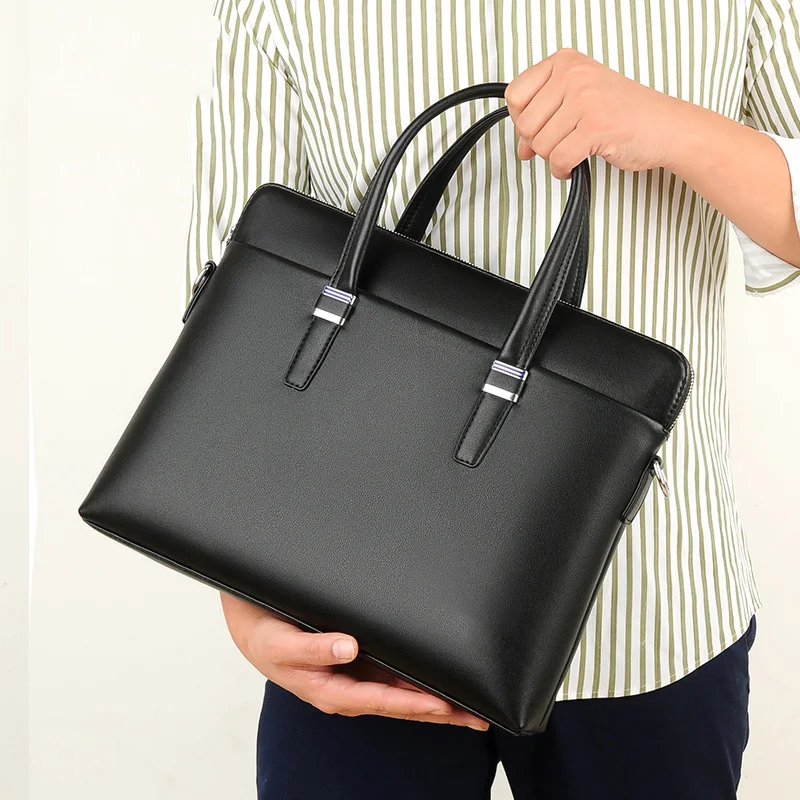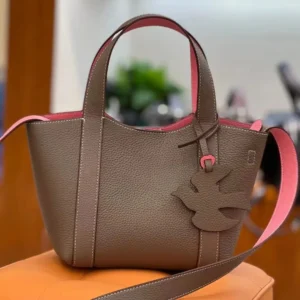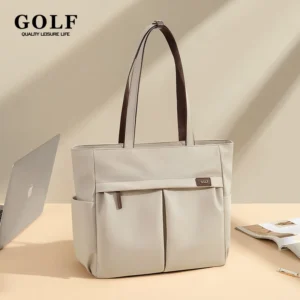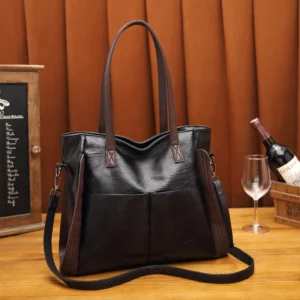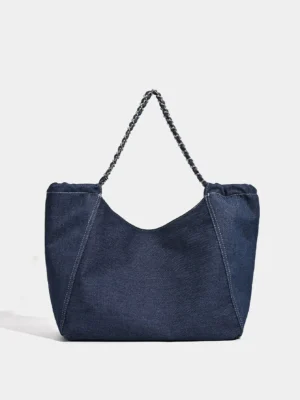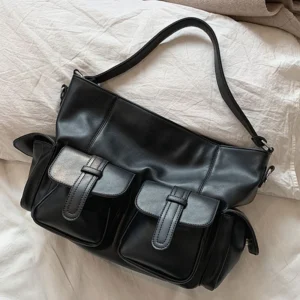Introduction: Why Vegan Leather is Gaining Popularity
Vegan leather refers to materials designed to mimic the look, feel, and function of animal leather without using any animal products. In recent years, these alternatives have experienced a remarkable surge in popularity as consumers increasingly seek products that align with their values while still delivering on quality and aesthetics.
This growing shift toward vegan leather options is driven by three primary motivations:
- Ethical considerations: Many consumers are troubled by the fact that over a billion animals are killed annually for leather production and seek cruelty-free alternatives that don’t contribute to animal suffering
- Environmental concerns: Traditional leather production involves resource-intensive cattle farming, extensive water usage, and chemical-heavy tanning processes that can be environmentally damaging
- Material innovation: Advancements in technology have transformed vegan alternatives from basic plastic derivatives to sophisticated materials that rival or even surpass traditional leather in certain performance aspects
The market for vegan leather briefcase options and other animal-free leather goods has grown by more than 49% in the past five years, reflecting this significant shift in consumer preferences. What began as simple plastic-based alternatives has evolved into a diverse landscape of materials derived from everything from pineapple leaves to mushrooms.
This comprehensive guide will walk you through the world of vegan leather alternatives, exploring their properties, sustainability credentials, practical applications, and how to choose options that best meet your specific needs. Whether you’re concerned about faux leather bag durability or environmental impact, this guide will help you navigate the increasingly diverse world of leather alternatives with confidence.
Understanding the Spectrum of Vegan Leather Materials
The term “vegan leather” encompasses a surprisingly diverse range of materials, each with distinct properties, production methods, and environmental footprints. Understanding these broad categories provides essential context for making informed choices.
Plant-Based and Bio-Based Options
These materials derive from agricultural waste, food byproducts, or specifically cultivated plants. They represent some of the most innovative and sustainable approaches to leather alternatives, using renewable resources that often would otherwise be discarded. Examples include materials made from pineapple leaves, apple peels, cactus pads, and mushroom mycelium.
Synthetic Alternatives
The most established category of vegan leather, synthetic options are primarily petroleum-based materials like polyurethane (PU) and polyvinyl chloride (PVC). While these have historically dominated the market due to their affordability and consistency, they raise environmental concerns due to their fossil fuel origins and limited biodegradability.
Innovative Bio-Fabricated Materials
This emerging category represents the cutting edge of material science, often combining natural components with synthetic elements to create high-performance alternatives. These hybrid approaches aim to achieve the best properties of both worlds while minimizing environmental impacts.
A common misconception is that all vegan leather options are plastic-based and environmentally problematic. In reality, the spectrum includes highly sustainable plant-based materials alongside traditional synthetics. Similarly, not all plant-based alternatives are equally eco-friendly—processing methods and additives can significantly impact their overall sustainability.
The evolution of vegan leather has been remarkable, transitioning from simple plastic-coated fabrics in the mid-20th century to today’s sophisticated non-leather work bags that utilize innovative materials like apple waste and mushroom mycelium. This progression represents a broader trend of incorporating sustainability principles into material development, moving beyond merely replicating leather’s appearance to creating truly next-generation materials.
Plant-Based Vegan Leather Alternatives: Natural Innovation
Plant-based leather alternatives represent some of the most exciting innovations in sustainable materials. These options harness natural fibers and agricultural byproducts to create leather-like materials with significantly reduced environmental footprints.
Piñatex (Pineapple Leaf Fiber)
Source/Composition: Made from pineapple leaf fibers, a byproduct of pineapple harvesting that would otherwise be burned or discarded.
Production Process: Leaves are processed to extract fibers, which are then felted into a non-woven mesh and finished with bio-based resins.
Key Properties:
– Appearance: Natural texture with visible fiber patterns
– Feel: Slightly stiffer than animal leather initially, softens with use
– Durability: Good tear resistance but can show wear at edges over time
– Water Resistance: Moderate; benefits from additional protective treatment
Sustainability Profile:
– Utilizes agricultural waste that would otherwise be discarded
– Provides additional income for farming communities
– Contains some PLA (polylactic acid) coating, making it not fully biodegradable
– Requires about 480 pineapple leaves to produce 1 square meter of material
Desserto (Cactus Leather)
Source/Composition: Created from nopal cactus (prickly pear) grown in Mexico without irrigation.
Production Process: Mature cactus pads are harvested, cleaned, mashed, dried, and mixed with non-toxic additives before being shaped into sheets.
Key Properties:
– Appearance: Smooth, consistent surface similar to conventional leather
– Feel: Soft and pliable with good flexibility
– Durability: High resistance to tearing and abrasion
– Water Resistance: Good natural water resistance
Sustainability Profile:
– Cactus requires minimal water and grows in semi-arid environments
– Harvesting is done every 6-8 months without damaging the plant
– Partially biodegradable (contains some synthetic stabilizers)
– Production uses significantly less water than conventional leather
Mycelium Leather (Mushroom-Based)
Source/Composition: Derived from mycelium, the root structure of mushrooms.
Production Process: Mycelium is grown on agricultural waste in controlled environments, then harvested, processed, and finished to create leather-like material.
Key Properties:
– Appearance: Can be produced with various textures and finishes
– Feel: Remarkably leather-like with natural suppleness
– Durability: Comparable to thin animal leather with proper care
– Water Resistance: Varies by finishing treatment
Sustainability Profile:
– Rapid growing cycle (weeks rather than years for animal leather)
– Can be grown on agricultural waste products
– Biodegradable at end of life (depending on finishing treatments)
– Production requires minimal water, land, and energy inputs
AppleSkin
Source/Composition: Created from apple industry waste (cores and peels) from juice and compote production.
Production Process: Apple waste is dried and ground into powder, then combined with PU and other materials to create a flexible material.
Key Properties:
– Appearance: Smooth with subtle texture variations
– Feel: Soft and flexible
– Durability: Good resistance to wear, similar to conventional synthetic leather
– Water Resistance: High
Sustainability Profile:
– Repurposes food waste that would otherwise be discarded
– Still contains synthetic components (typically 50% apple waste, 50% PU)
– Reduces overall petroleum consumption compared to fully synthetic options
– Lower carbon footprint than conventional PU leather
Cork Leather
Source/Composition: Harvested from the bark of cork oak trees, primarily in Portugal and Spain.
Production Process: Cork bark is harvested, boiled, flattened, and sliced into thin sheets, then often backed with fabric or other materials.
Key Properties:
– Appearance: Distinctive natural grain pattern
– Feel: Light, soft, and flexible
– Durability: Naturally resistant to moisture, fire, and mold
– Water Resistance: Excellent natural water resistance
Sustainability Profile:
– Harvesting doesn’t harm trees, which continue absorbing CO₂
– Cork oak forests support biodiversity hotspots
– Renewable resource (bark regrows every 9-12 years)
– Biodegradable if not combined with synthetic backings
When comparing these plant-based options to traditional materials used in professional leather briefcases, many perform remarkably well while offering unique aesthetic qualities and sustainability benefits. The selection criteria used when choosing the perfect leather briefcase – durability, appearance, functionality, and value – apply equally when evaluating these innovative plant-based alternatives.
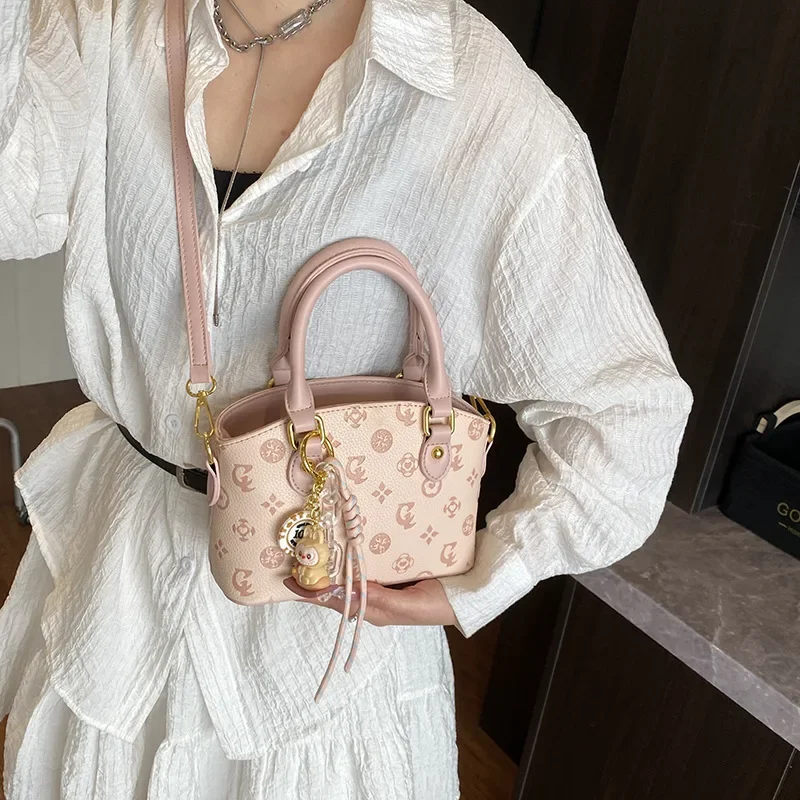
Synthetic Vegan Leather Alternatives: Traditional Options
Synthetic vegan leathers represent the most established category of leather alternatives and remain widely used across various industries. These materials offer consistency, affordability, and certain performance advantages, though they come with environmental considerations.
Polyurethane (PU) Leather
Composition: A fabric backing coated with polyurethane, a polymer derived from petroleum.
Production Process: Fabric (typically polyester or cotton) is coated with layers of polyurethane and embossed with texture patterns to resemble leather grain.
Key Properties:
– Appearance: Can closely mimic different leather textures and finishes
– Feel: Flexible and can be very soft, though typically less breathable than real leather
– Durability: Moderate; resistant to water and staining but can crack or peel over time
– Water Resistance: Excellent water resistance
Advantages:
– More affordable than animal leather and many plant-based alternatives
– Consistent quality and appearance
– Available in endless colors and textures
– Animal-free and lower production emissions than animal leather
Disadvantages:
– Petroleum-based material with fossil fuel dependency
– Traditional production uses toxic solvents (DMF)
– Limited biodegradability and recycling options
– Can release microplastics during wear and breakdown
Polyvinyl Chloride (PVC) Leather
Composition: Fabric backing coated with polyvinyl chloride, a synthetic plastic polymer.
Production Process: Similar to PU leather production, with PVC applied to a fabric backing and textured to resemble leather.
Key Properties:
– Appearance: Tends to have a shinier, more plastic-like appearance than PU
– Feel: Less supple than PU leather, often stiffer
– Durability: Very durable and resistant to oils, chemicals, and moisture
– Water Resistance: Completely waterproof
Advantages:
– Highly durable and long-lasting
– The least expensive leather alternative
– Extremely water-resistant and easy to clean
– Resistant to mold, mildew, and rot
Disadvantages:
– Contains vinyl chloride, considered a human carcinogen
– Production and disposal release harmful dioxins
– Contains phthalates and other potentially harmful plasticizers
– Poor breathability and comfort in clothing applications
Water-Based PU Leather
Composition: Similar to traditional PU leather but produced using water as a solvent rather than toxic chemicals.
Production Process: Uses water-based technology to apply polyurethane to fabric backing, significantly reducing harmful emissions.
Key Properties:
– Appearance: Similar to conventional PU leather
– Feel: Typically softer and more breathable than traditional PU
– Durability: Comparable to conventional PU with improved flexibility
– Water Resistance: Very good
Advantages:
– Eliminates toxic DMF from production process
– Reduces harmful emissions by up to 95%
– Lower carbon footprint than conventional PU
– Often more breathable and comfortable
Disadvantages:
– Still petroleum-based and not biodegradable
– Higher production cost than conventional PU
– Limited recycling options at end of life
– May contain other chemical additives
Recycled Plastic Leather
Composition: Made from post-consumer plastic waste (primarily PET bottles) combined with polyurethane or other binders.
Production Process: Plastic bottles are cleaned, shredded into flakes, melted, and extruded into new fibers that are then woven and coated.
Key Properties:
– Appearance: Variable depending on production method and finishing
– Feel: Can range from stiff to quite supple
– Durability: Generally good resistance to wear and tear
– Water Resistance: Excellent
Advantages:
– Diverts plastic waste from landfills and oceans
– Reduces demand for virgin petroleum in production
– Lower carbon footprint than conventional synthetic leather
– Comparable performance to traditional synthetic options
Disadvantages:
– Still contains synthetic polymers
– Limited biodegradability
– Microplastic shedding concerns
– Variable quality depending on manufacturing processes
For many consumers seeking vegan leather work tote options, synthetic alternatives provide accessible, budget-friendly choices that don’t compromise on style or basic functionality. When comparing these options against standards set by traditional materials in the definitive guide to ideal leather briefcase choices, synthetics excel in consistency, color variety, and initial affordability, though they may not develop the same patina and character over time.
Innovative & Bio-Fabricated Options: The Future of Leather Alternatives
The most cutting-edge segment of vegan leather development focuses on bio-fabricated materials that combine natural components with innovative technology. These next-generation alternatives aim to overcome limitations of both traditional synthetic options and early plant-based materials.
Mirum: Plastic-Free Biomaterial
Mirum represents a significant breakthrough as a completely plastic-free alternative to leather. Created by Natural Fiber Welding, this innovative material:
- Consists of natural rubber, plant oils, cork, and other agricultural waste materials
- Contains zero petroleum-derived ingredients or plastic coatings
- Achieves exceptional durability through a proprietary crosslinking technology rather than plastic binders
- Offers full circularity—can be ground up at end of life and recycled into new Mirum material
- Requires 40 times less water than animal leather production and emits 90% fewer carbon emissions
The material performs remarkably well in tensile strength tests (comparable to cowhide leather) while remaining flexible and maintaining a leather-like hand feel. Major brands have begun incorporating Mirum into premium accessories, demonstrating its viability as a high-performance alternative.
Bio-Tex and Lab-Grown Options
Scientists are developing truly revolutionary approaches to recreating leather’s structure at the molecular level:
- Modern Meadow’s Zoa technology uses bioengineered yeast to produce collagen (the protein in leather) without animals
- These lab-grown proteins can be assembled into materials with precisely engineered properties
- The resulting materials can replicate leather’s unique combination of strength, flexibility and breathability
- Unlike synthetic options, these bio-fabricated materials are protein-based like natural leather
- Production consumes significantly less water and land than raising cattle for leather
While still scaling toward full commercial production, these technologies represent perhaps the closest approach to recreating leather’s fundamental structure without animal involvement.
Emerging Technologies
Several other promising innovations are on the horizon:
- Bacterial cellulose leather derived from kombucha cultures (similar to SCOBY)
- Algae-based materials that can sequester carbon during production
- Agricultural waste composites using everything from coffee grounds to corn husks
- Wood-derived materials using sustainable forestry byproducts
These materials are addressing key limitations in current alternatives by focusing on:
- Complete biodegradability without sacrificing performance
- Reducing or eliminating petroleum-based components
- Enhancing breathability and comfort characteristics
- Achieving true circularity in production systems
The development of these advanced materials is being accelerated through partnerships between startups, established fashion brands, and material science research institutions. This collaborative approach has compressed innovation cycles that previously took decades into just a few years.
When evaluating these emerging options against the standards outlined for top-rated classic leather briefcases, many are already achieving comparable performance in key areas while offering distinct environmental advantages. The gap between traditional leather and high-performance alternatives continues to narrow with each technological breakthrough.
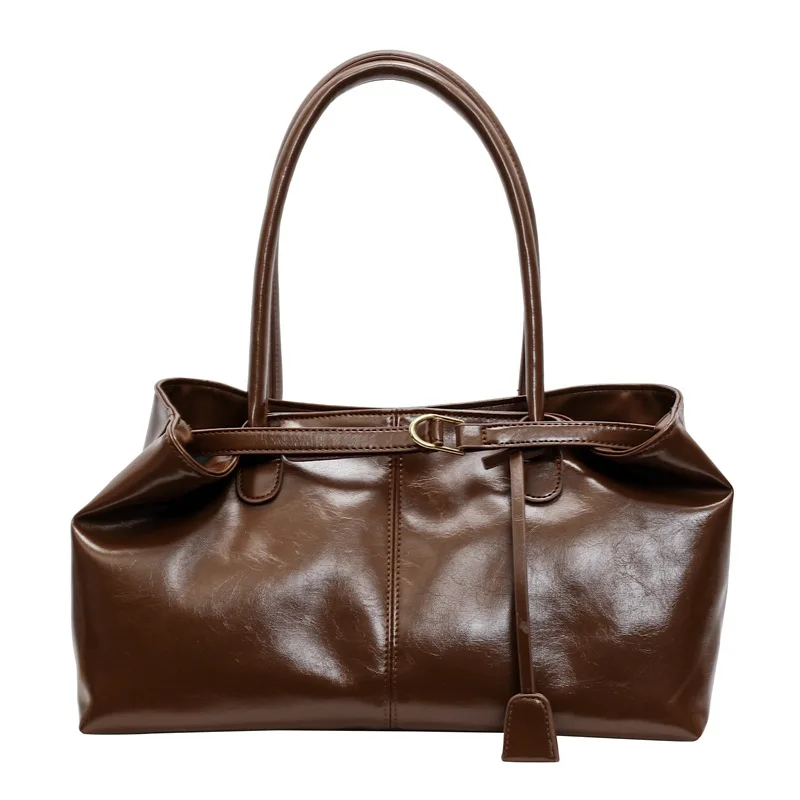
Comparative Analysis: Properties That Matter When Choosing Vegan Leather
When selecting vegan leather for specific applications, understanding how different materials perform across key metrics is essential. This comparative analysis provides a framework for evaluating options based on practical considerations.
| Material Type | Durability | Feel/Texture | Breathability | Water Resistance | Environmental Impact | Price Range |
|---|---|---|---|---|---|---|
| Plant-Based | ||||||
| Piñatex | Medium-High | Slightly stiff, softens | Moderate | Moderate | Low-Medium | $$$ |
| Desserto (Cactus) | High | Soft, pliable | Good | Good | Low | $$$$ |
| Mycelium | Medium | Natural, supple | Very Good | Low-Medium | Very Low | $$$$ |
| AppleSkin | Medium-High | Soft, flexible | Low-Medium | High | Medium | $$$ |
| Cork | Medium | Light, distinctive | Excellent | Very High | Very Low | $$ |
| Synthetic | ||||||
| Traditional PU | Medium | Smooth, flexible | Poor | High | High | $ |
| PVC | High | Stiff, plastic-like | Very Poor | Very High | Very High | $ |
| Water-based PU | Medium | Softer than traditional | Low-Medium | High | Medium-High | $$ |
| Recycled Plastic | Medium-High | Variable | Poor | High | Medium | $$ |
| Bio-Fabricated | ||||||
| Mirum | High | Leather-like | Good | High | Very Low | $$$$ |
| Bio-engineered | High | Very leather-like | Good | Medium-High | Low | $$$$$ |
Understanding Key Properties
Durability: This measures how well the material withstands wear and tear over time. For items like faux leather work tote bags that face daily use, durability becomes particularly important. PVC ranks highest for pure longevity, while materials like Desserto and Mirum offer strong durability without the environmental concerns.
Feel and Texture: This subjective quality affects user experience and perceived luxury. Bio-fabricated materials typically come closest to animal leather’s unique hand feel, while synthetic options often feel more artificial. For professional accessories, this tactile quality significantly impacts perceived value.
Breathability: The ability of a material to allow moisture and air exchange affects comfort, particularly for items worn against the skin. Cork and mycelium materials excel here, while synthetic options typically perform poorly. For footwear and clothing applications, breathability is crucial for comfort.
Water Resistance: Different applications require different levels of water protection. Synthetic options generally offer superior water resistance, making them practical for outdoor applications, while many plant-based alternatives require additional treatment for full waterproofing.
Environmental Impact: This encompasses factors including resource use, production emissions, and end-of-life considerations. Generally, bio-fabricated and plant-based options have significantly lower environmental footprints than synthetic alternatives, though processing methods and additives can affect overall impact.
Price Range: Cost considerations remain important for most consumers. Synthetic options are typically most affordable, while cutting-edge bio-fabricated materials command premium prices that may decrease as production scales.
Application-Specific Considerations
Different products demand different material properties:
- For bags and briefcases: Durability and water resistance are paramount, making materials like Desserto, water-based PU, and Mirum strong contenders.
- For footwear: Breathability becomes crucial, favoring options like mycelium leather and certain plant-based alternatives.
- For apparel: Flexibility, breathability, and hand feel are essential, making bio-fabricated options and softer plant-based materials ideal.
- For furniture and upholstery: Extreme durability requirements may still favor certain synthetic options or specialized versions of bio-fabricated materials.
When evaluating options for professional accessories, these considerations should be weighed against standards established for durable leather briefcase options to ensure the alternative material meets comparable performance requirements.
Decision-Making Framework: Matching Materials to Your Needs
Selecting the right vegan leather involves balancing various factors according to your specific priorities. This framework helps match different materials to common needs and scenarios.
For Maximum Durability and Longevity
If your primary concern is creating an investment piece that will withstand years of regular use:
- Best Options: Water-based PU, Desserto (cactus leather), Mirum
- Why: These materials offer the best combination of resistance to wear, scratch-resistance, and structural integrity over time
- Considerations: Apply protective treatments appropriate for the specific material and implement regular care routines
For products that will face harsh conditions or heavy use, durability becomes even more critical. Professional bags carried daily should meet similar standards to those outlined for defining best leather briefcases, with emphasis on reinforced stress points and quality hardware regardless of the material chosen.
For the Closest Look and Feel to Animal Leather
If authenticity in appearance and tactile experience is your priority:
- Best Options: Bio-fabricated materials, Mycelium leather, Desserto
- Why: These materials most closely replicate leather’s unique combination of suppleness, subtle surface variations, and patina development
- Considerations: Some plant-based materials develop character over time similar to animal leather, while synthetics typically don’t age in the same aesthetically pleasing way
For Minimal Environmental Impact
If sustainability is your primary concern:
- Best Options: Cork leather, Mycelium leather, Mirum
- Why: These materials feature minimal or no plastic content, lower production impacts, and some biodegradability at end-of-life
- Considerations: Look for transparency in production methods and certifications verifying environmental claims
For Specific Applications
Different use cases demand different material properties:
- For Footwear: Mycelium leather, Desserto, or water-based PU (prioritizing breathability and flexibility)
- For Outerwear: Mirum, Piñatex, or water-based PU (balancing weather resistance with breathability)
- For Accessories: Depends on specific use—AppleSkin works well for structured bags, while cork offers distinctive aesthetic appeal
- For Furniture: Mirum, recycled plastic leather, or specialized mycelium formulations designed for upholstery applications
For Different Budget Considerations
Vegan leather options exist across various price points:
- Budget-Friendly: Traditional PU, water-based PU, recycled plastic leather
- Mid-Range: Piñatex, AppleSkin, cork leather
- Premium: Desserto, Mycelium leather, Mirum, bio-engineered materials
Special Considerations
Additional factors may influence your decision:
- Allergies: Those with plastic sensitivities should consider plant-based options with minimal synthetic content
- Climate Conditions: In humid environments, materials with natural resistance to mold and mildew (like cork) may perform better
- Care Requirements: Consider your willingness to perform regular maintenance—some plant-based options require more careful treatment than synthetics
By identifying your top priorities and acceptable compromises, you can narrow down the ideal materials for your specific needs. For those interested in professional bag options specifically, exploring vegan leather messenger bag collections can provide practical examples of how these materials perform in daily use.

Sustainability Deep Dive: Environmental Impact of Vegan Leather Options
Understanding the true environmental impact of different vegan leather options requires examining their full lifecycle—from raw material sourcing through production, use, and eventual disposal.
Raw Material Sourcing
The environmental story begins with how materials are obtained:
- Plant-Based Options: Generally utilize agricultural byproducts (like pineapple leaves or apple waste) or rapidly renewable resources (like cork or cactus). This approach reduces waste and requires minimal additional land use.
- Synthetic Options: Rely on petroleum, a non-renewable fossil fuel whose extraction causes significant environmental damage and contributes to climate change.
- Bio-Fabricated Options: Often use agricultural waste as growth media or sustainably sourced natural components, significantly reducing resource demands.
Material sourcing impact varies dramatically—producing conventional PU leather requires approximately 33% more energy than using agricultural waste streams for materials like Piñatex or AppleSkin.
Manufacturing Processes and Chemical Usage
Production methods significantly affect overall sustainability:
- Traditional PU Production: Uses toxic solvents like DMF (dimethylformamide), creating worker health risks and environmental hazards
- PVC Production: Releases dioxins and other harmful chemicals during manufacturing and disposal
- Water-Based Systems: Reduce harmful emissions by up to 95% compared to traditional methods
- Plant-Based Processing: Generally uses fewer hazardous chemicals but may still require synthetic binders or finishes
- Bio-Fabrication: Often employs low-impact enzymatic processes rather than harsh chemicals
Water usage also varies dramatically. Traditional leather processing requires approximately 170 liters of water per square meter, while materials like Desserto (cactus leather) need just 5% of that amount.
Durability and Lifespan
Product longevity significantly impacts overall sustainability:
- Materials that quickly crack, peel, or deteriorate create more waste regardless of their initial production footprint
- High-quality synthetic options may last 5-10 years with proper care
- Plant-based alternatives vary widely in durability, with newer options improving rapidly
- Bio-fabricated materials are engineering longevity into their design from the start
The environmental math changes significantly when accounting for product lifespan—a material with twice the lifespan essentially halves its per-year environmental impact.
End-of-Life Considerations
What happens when products are no longer usable varies dramatically:
- Fully Synthetic Options: Typically non-biodegradable, potentially lasting centuries in landfills with limited recycling options
- Partially Biodegradable: Materials like Piñatex will partially break down while synthetic components remain
- Fully Biodegradable: Options like Mirum and certain mycelium leathers can fully return to the earth
- Circular Systems: Some newer materials are designed to be recycled back into production
Navigating Greenwashing
As sustainability becomes a selling point, misleading claims have proliferated:
- Terms like “eco-friendly” and “natural” are largely unregulated and may be meaningless
- “Biodegradable” claims should specify conditions and timeframe
- “Plant-based” materials may still contain significant synthetic components
To identify genuine sustainability:
- Look for specific, quantifiable claims rather than vague terminology
- Check for recognized third-party certifications (e.g., Cradle to Cradle, Global Organic Textile Standard)
- Research company transparency regarding supply chain and production methods
- Be wary of brands that highlight one positive aspect while ignoring larger impact areas
The Certification Landscape
Meaningful certifications can help verify sustainability claims:
- OEKO-TEX Standard 100: Verifies absence of harmful chemicals
- Global Recycled Standard: Confirms recycled content claims
- FSC Certification: Ensures responsible forestry for wood-based components
- Cradle to Cradle: Evaluates material health, recyclability, renewable energy use, water stewardship, and social fairness
Brown Leather Work Tote, Large Leather Work Tote
$194.38 Select options This product has multiple variants. The options may be chosen on the product pageLeather Laptop Work Tote, Tan Leather Work Tote, Women's Leather Work Tote, Zippered Leather Work Tote
Price range: $223.62 through $237.97 Select options This product has multiple variants. The options may be chosen on the product pageBlack Leather Satchel, Brown Leather Satchel, Vegan Leather Work Tote
Price range: $69.58 through $73.23 Select options This product has multiple variants. The options may be chosen on the product pageCanvas & Leather Messenger Bag, Leather Commuter Tote
$80.41 Select options This product has multiple variants. The options may be chosen on the product pageBlack Leather Messenger Bag, Black Leather Work Tote, Faux Leather Work Tote
$101.88 Select options This product has multiple variants. The options may be chosen on the product pageBlack Leather Work Tote, Faux Leather Work Tote, Women's Leather Business Tote
Price range: $88.81 through $93.85 Select options This product has multiple variants. The options may be chosen on the product page
When comparing vegan options to traditional leather work totes, it’s important to consider that conventional leather production has significant environmental impacts, including methane from livestock, deforestation for grazing land, and chemical-intensive tanning processes. However, well-made leather products can last decades with proper care, distributing their impact over a longer period.
Care and Maintenance for Different Vegan Leather Types
Proper maintenance significantly extends the life of vegan leather products, maximizing both their value and sustainability. Care requirements vary substantially based on material composition.
Plant-Based Materials Care
Plant-based vegan leathers typically require more attentive care than synthetic options:
Piñatex (Pineapple Leather)
– Clean with a damp cloth and mild soap
– Avoid soaking or machine washing
– Apply specialized plant-based leather conditioner every 3-6 months
– Keep away from direct sunlight when not in use
– Store in a breathable dust bag, not plastic
Cork Leather
– Wipe with a slightly damp cloth to remove dust
– Use mild soap for stains, rinse with damp cloth
– Apply cork sealant annually to maintain water resistance
– Extremely durable against mold and mildew
– Avoid prolonged sun exposure which can fade the material
Desserto (Cactus) and Mycelium
– Spot clean with mild soap and water
– Blot rather than rub when cleaning stains
– Condition with specialized plant-based products
– Avoid alcohol-based cleaners which can dry out the material
– Protect from extended UV exposure
Synthetic Materials Care
Synthetic vegan leathers are generally easier to maintain but require specific approaches for longevity:
PU Leather
– Clean with mild soap and water
– Use a soft cloth to avoid scratching the surface
– Apply specialized synthetic leather conditioner every 4-6 months to prevent cracking
– Keep away from heat sources that can deform the material
– Avoid alcohol-based cleaners which can degrade the polyurethane coating
PVC Leather
– Wipe with damp cloth for regular cleaning
– Use mild dish soap for stubborn stains
– Apply specialized vinyl conditioner to prevent drying and cracking
– Keep away from direct heat sources
– Avoid oil-based products that can damage the material
Water-Based PU and Recycled Materials
– Follow general PU leather care guidelines
– Some water-based PU options may be more sensitive to harsh cleaners
– Check manufacturer recommendations for specific formulations
Common Issues and Solutions
Preventing and Addressing Scuffs
– For minor scuffs on synthetic leather: gently buff with a soft cloth
– For plant-based materials: apply appropriate conditioner and buff gently
– For deeper scratches: specialized repair balms may help, though severe damage may be permanent
Dealing with Water Damage
– Blot excess moisture immediately, never rub
– Allow to air dry naturally away from direct heat
– For water spots on plant-based materials, slightly dampen the entire affected area and allow to dry evenly
– Apply appropriate conditioner after fully dry
Storage Tips for Longevity
– Store in cool, dry environments away from direct sunlight
– Use breathable dust bags rather than plastic
– Stuff bags with acid-free tissue to maintain shape
– Avoid hanging straps on sharp hooks which can cause deformation
– For seasonal items, apply appropriate conditioner before extended storage
Proper care techniques for vegan leather products are similar in principle to those outlined in the professionals guide to leather bag care, with material-specific adjustments. The classic leather briefcase comparison highlights how maintenance requirements differ between traditional and vegan materials, with each requiring specific approaches for maximum longevity.
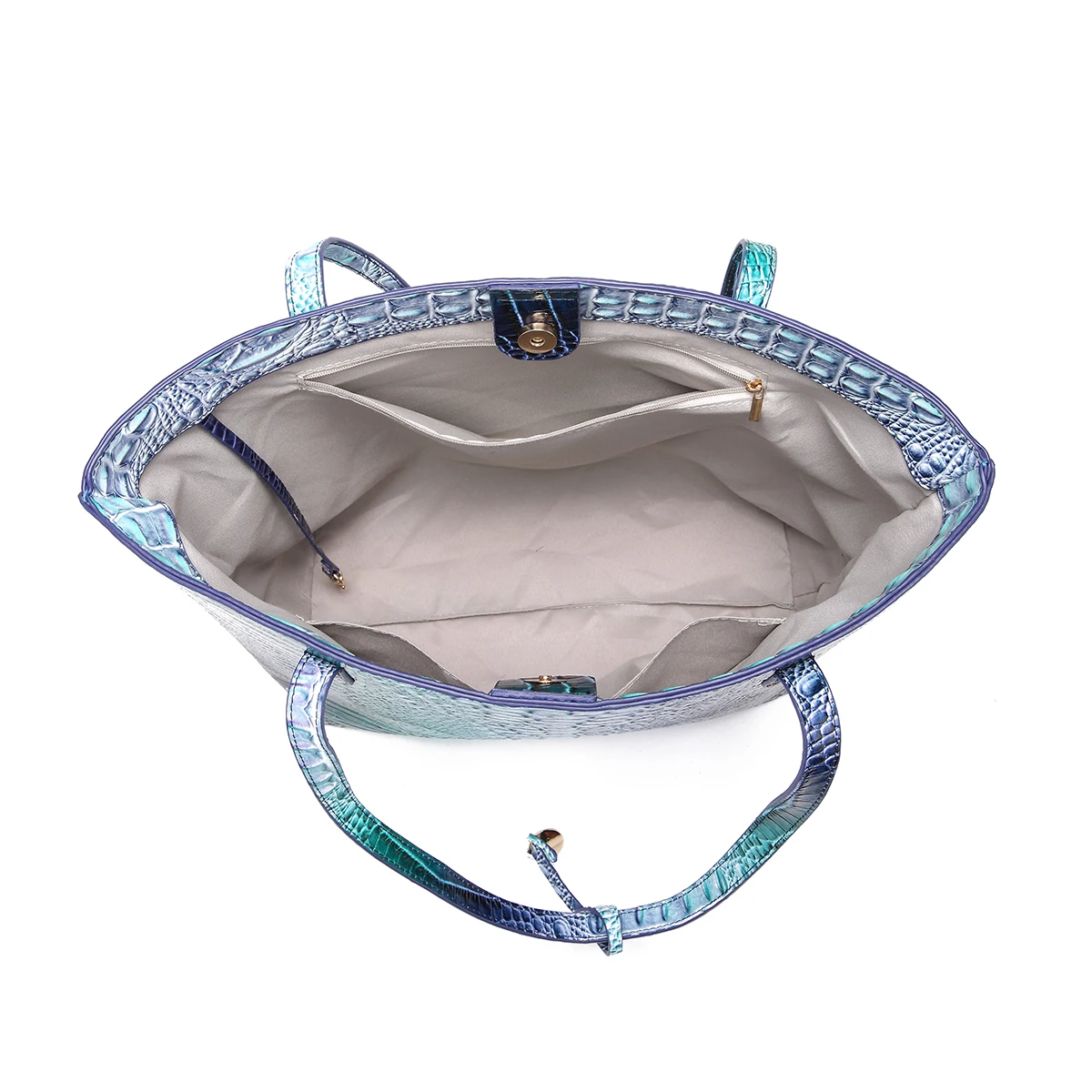
The Future of Vegan Leather: Innovations on the Horizon
The landscape of vegan leather alternatives is evolving rapidly, with several groundbreaking technologies poised to transform the market in coming years. These innovations aim to address remaining limitations in current options while further reducing environmental impacts.
Lab-Grown Collagen and Protein-Based Materials
Perhaps the most revolutionary approach involves creating the actual proteins found in leather without animal involvement:
- Companies like Modern Meadow are using bioengineering to program yeast cells to produce collagen—the primary structural protein in animal leather
- This technique creates molecularly identical protein structures to those found in leather, but without raising or slaughtering animals
- The resulting materials can be tuned for specific properties like flexibility, strength, or texture
- Early prototypes demonstrate exceptional performance characteristics that closely mimic premium animal leather
This technology represents a fundamental shift from imitation to recreation of leather’s molecular structure, potentially offering the best of both worlds: genuine leather properties with no animal welfare concerns.
Fully Biodegradable Synthetic Options
Addressing the end-of-life issues with current synthetic leather:
- New polymers derived from renewable resources like corn, sugarcane, and algae are replacing petroleum-based materials
- These biopolymers maintain performance characteristics while biodegrading at end of life
- Enhanced durability is being achieved without permanent environmental persistence
- Some breakthrough materials decompose completely within 1-2 years in industrial composting facilities
These innovations address one of the most significant criticisms of synthetic alternatives—their environmental persistence long after useful life ends.
Circular Economy Models
Beyond material composition, the entire lifecycle approach is being reimagined:
- Brands are developing take-back programs where old products are fully recycled into new materials
- Materials designed specifically for disassembly and component recycling
- Zero-waste production systems that utilize all byproducts
- Rental and repair models that extend product lifespans dramatically
These system-level innovations may ultimately prove as important as material advancements in reducing overall environmental impact.
Industry Trends Driving Innovation
Several market forces are accelerating development:
- Luxury Brand Adoption: Premium fashion houses are investing heavily in alternative materials research, driving quality improvements and market acceptance
- Cross-Industry Collaboration: Technology transfer from biomedical, automotive, and packaging industries is bringing new approaches to leather alternatives
- Consumer Demand for Sustainability: Increasing willingness to pay premium prices for truly sustainable options is funding further research
- Material Science Breakthroughs: Advances in biomimicry and nanotechnology are enabling more sophisticated material structures
While high-end alternatives still command premium prices comparable to those outlined in affordable quality leather briefcases guides, economies of scale are gradually bringing costs down. The performance gap between traditional and alternative materials continues to narrow with each innovation cycle.
The comparison between leather vs canvas messenger bags has long highlighted the tradeoffs between different material approaches. These emerging technologies aim to create options that deliver the best attributes of traditional materials while eliminating their drawbacks, potentially rendering such comparisons obsolete in the coming years.
Frequently Asked Questions About Vegan Leather
How long does vegan leather typically last compared to animal leather?
Durability varies significantly by material type. High-quality synthetic vegan leathers typically last 2-5 years with regular use, while premium animal leather can last decades. However, newer bio-fabricated options like Mirum and certain plant-based alternatives are significantly closing this gap. The most durable vegan options now can last 5-10 years with proper care, approaching the lower end of quality animal leather’s lifespan. Key factors affecting longevity include material quality, frequency of use, exposure to elements, and maintenance practices.
Is vegan leather waterproof?
Most synthetic vegan leathers (PU and PVC) are naturally highly water-resistant or waterproof. Plant-based alternatives vary significantly—cork has excellent natural water resistance, while materials like Piñatex and mycelium leather generally offer moderate resistance but benefit from additional protective treatment. Water-resistance treatments can be applied to most vegan leathers to improve performance, but these may need periodic reapplication. For items that will face regular exposure to moisture, synthetic options or specially treated plant-based materials are typically best.
Are synthetic leathers harmful to the environment or health?
Traditional synthetic leathers raise several environmental and health concerns. Production often involves toxic chemicals like DMF (dimethylformamide), they’re derived from non-renewable petroleum, and they don’t biodegrade at end of life. PVC leather is particularly problematic, containing phthalates and releasing dioxins during production and disposal. However, newer water-based PU formulations significantly reduce toxic chemical use, and bio-based synthetic options incorporate renewable resources. Health risks to consumers are minimal with finished products, but production workers face greater exposure risks with traditional manufacturing methods.
Can vegan leather products be repaired?
Repair possibilities depend on the specific material. Synthetic vegan leathers can be patched from behind or repaired with specialized adhesives for small tears, but significant damage is often irreparable. Some plant-based materials like cork can be more easily repaired with appropriate fillers and sealants. The repairability of vegan leathers generally doesn’t match that of animal leather, which can be restitched, recolored, and restored more extensively. However, repair options are improving as the market matures, with some manufacturers now offering repair services specifically for their vegan leather products.
Is vegan leather breathable?
Breathability varies dramatically across vegan leather types. Traditional PU and PVC leathers typically offer poor breathability, which can cause discomfort in clothing applications. Modern water-based PU options have improved somewhat but still don’t match animal leather. Plant-based alternatives generally offer better breathability, with cork and mycelium leathers being standouts in this regard. Bio-fabricated options are specifically engineering breathability into their structure, with some newer materials approaching or matching animal leather’s performance.
What is the most durable type of vegan leather?
For pure longevity, high-quality PVC leather is extremely durable but comes with significant environmental concerns. Among more sustainable options, water-based PU, Desserto (cactus leather), and Mirum typically offer the best durability. Mirum in particular has demonstrated excellent abrasion resistance and structural integrity in testing. For products requiring maximum durability, look for reinforced construction methods regardless of material choice—the way items are made significantly affects longevity alongside the base material properties.
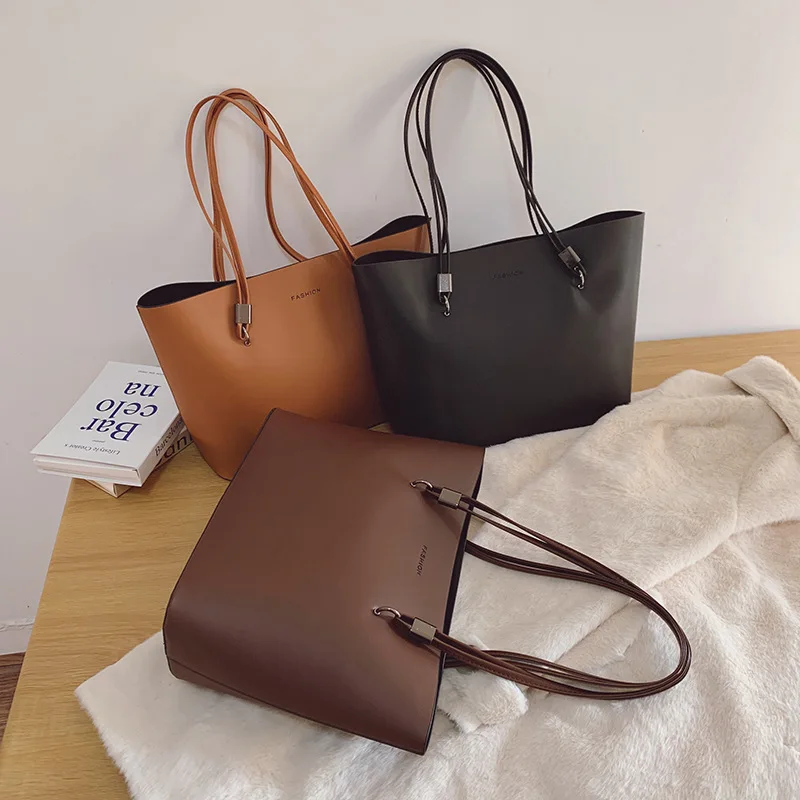
What is the most eco-friendly vegan leather option?
Currently, the most environmentally sound options include:
– Mirum: Completely plastic-free, made from natural rubber and agricultural waste, fully circular
– Cork leather: Harvested without harming trees, biodegradable, minimal processing required
– Mycelium leather: Grown on agricultural waste, biodegradable, low resource requirements
The “most eco-friendly” option depends somewhat on specific priorities—carbon footprint, water usage, biodegradability, or chemical inputs. Materials with transparent production processes and recognized certifications typically represent the most genuinely sustainable choices.
How can you tell if vegan leather is good quality?
Quality indicators for vegan leather include:
– Uniform color application without streaking or unevenness
– Backing material firmly adhered with no separation or bubbling
– Clean, consistent stitching along seams
– Appropriate weight and substance (extremely thin materials often indicate poor quality)
– Flexibility without surface cracking
– Natural-looking texture rather than an obviously plastic appearance
– No strong chemical odor
For products, examine stress points, hardware attachment methods, and overall construction quality—factors highlighted in the definitive guide to classic leather briefcase selection apply equally when evaluating vegan leather goods.
Making Your Selection: Balancing Ethics, Sustainability, and Functionality
Choosing the right vegan leather involves balancing personal values with practical needs—a thoughtful process that acknowledges there’s rarely a perfect solution that excels in every dimension.
The most effective approach begins with clarifying your priorities. For some, ethical considerations are paramount—completely avoiding animal products takes precedence over other factors. Others may prioritize environmental impact, seeking materials with the lowest possible carbon footprint or those that avoid plastic components. Still others focus primarily on performance characteristics like durability, water resistance, or aesthetic appeal.
Understanding these personal hierarchies of value helps navigate inevitable tradeoffs. For instance, if sustainability is your top priority, you might choose a material like cork or Mirum despite higher cost or limited color options. If durability is essential for a heavily-used item, you might select a water-based PU option while accepting its partial synthetic composition.
Context matters significantly—the best choice for a professional bag used daily differs from occasional-use items or pieces exposed to harsh conditions. Material selection should reflect the specific demands of the intended use.
Consider longevity as a sustainability factor regardless of material choice. Even the most eco-friendly option becomes wasteful if it requires frequent replacement. Investing in quality construction, proper maintenance, and timely repairs dramatically extends the lifecycle of any product, distributing its environmental footprint over many more years of use.
The landscape of vegan leather alternatives continues to evolve rapidly. Materials unavailable just a few years ago now offer compelling performance while addressing previous environmental concerns. This pace of innovation suggests that options will continue improving—closing remaining performance gaps while further reducing ecological impacts.
Ultimately, making mindful choices about the products we purchase and how we care for them matters more than finding a theoretically perfect material. By thoughtfully selecting alternatives that align with your values, maintaining them properly, and using them fully before replacement, you contribute to a more sustainable and ethical approach to consumption—regardless of which specific vegan leather option you choose.

